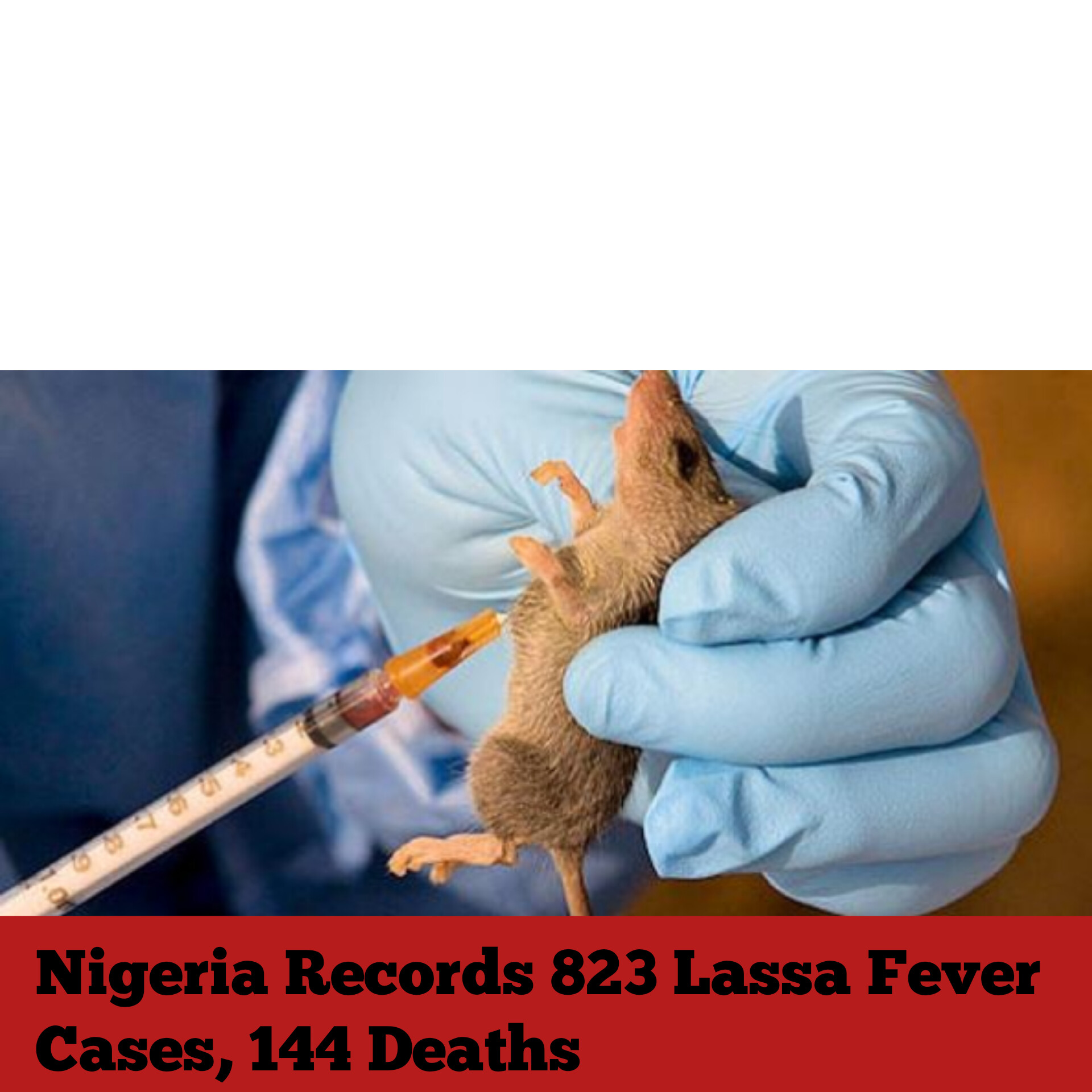No fewer than 823 confirmed cases of Lassa fever were recorded out of 4,108 suspected cases from 98 local government areas in 24 states in Nigeria.
This is according to the Lassa fever epidemiological report for week 12 released by the Nigeria Centre for Disease Control and Prevention on Thursday.
The Lassa fever report from January to March 26, 2023, showed that 144 persons have succumbed to the disease with a Case Fatality Ratio of 17.5 per cent.
The report also showed that 38 healthcare workers have been affected so far in the year.
According to the World Health Organisation, Lassa fever is an acute viral hemorrhagic illness caused by the Lassa virus, a member of the arenavirus family of viruses. Humans usually become infected with the Lassa virus through exposure to food or household items contaminated with the urine or faeces of infected Mastomys rats. The disease is endemic in the rodent population in parts of West Africa.
Lassa fever is known to be endemic in Benin, Ghana, Guinea, Liberia, Mali, Sierra Leone, Togo, and Nigeria, but probably exists in other West African countries as well.
“In week 12, the number of new confirmed cases increased from 38 in week 11 2023 to 39 cases. These were reported from Bauchi, Ondo, Edo, Taraba, Kaduna, and Kogi States.
“Cumulatively from week 1 to week 12, 2023, 144 deaths have been reported with a CFR of 17.5% which is lower than the CFR for the same period in 2022 (18.6%).
“In total for 2023, 24 States have recorded at least one confirmed case across 98 Local Government Areas,” the report read in part.
It also said 72 per cent of all confirmed Lassa fever cases were reported from these Ondo, Edo, and Bauchi states while 28 per cent were reported from three states with confirmed Lassa fever cases.
Of the the 72 per cent confirmed cases, Ondo reported 32 per cent, Edo 29 per cent, and Bauchi 11 per cent.
“The predominant age group affected is 21-30 years (Range: 1 to 93 years, Median Age: 32 years). The male-to-female ratio for confirmed cases is 1:0.9.
The number of suspected cases increased compared to that reported for the same period in 2022.
Source:punchng.com

